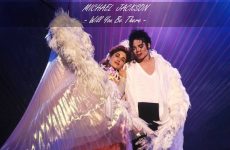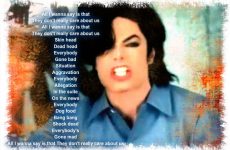Rhythm and How Music Works by Howard Goodall
In this documentary Rhythm and How Music Works by Howard Goodall, we are shown the reasons why music needs rhythm, tempo and meter to give it structure.
From the moment our hearts start beating, rhythm is integral to us all. From walking to dancing, from clicking our fingers to tapping our toes, we are all programmed to respond to rhythm. In this film Howard looks at the common rhythmic patterns that have been used by musicians from all cultures, from Brahms to rappers, from the founders of Cuban son to Philip Glass, from Stevie Wonder to Fats Waller.
From Dancing to Tranquility
Why do some rhythms make us want to dance, while others make us feel tranquil? How does rhythm ‘work’ when there is no obvious pulse, as in much classical music? What links African drumming to J S Bach? Why do virtually all popular singers sing ahead of the beat?
And how is it that a tiny Caribbean island has produced a rhythm that dominates popular music the world over?
What is Rhythm?
The word rhythm is believed to come from the Greek word ‘Rhein’ meaning to flow or stream. Rhythm is when things happen in the flow of time. In music, rhythm is about when notes, chords, and other musical sounds begin and end.
Rhythm – the Most Important Element
Rhythm is the essential ingredient in all music. You can mix together any sounds you want, but if there is no underlying rhythm to the sounds, there is no music. For example, listen to the intro of Money by Pink Floyd. They took the unmusical sounds of a cash register and set them to a consistent rhythmic pulse. Suddenly sounds that never sounded like music before sound like music. Rhythm is the key element of music.
Here, There and Everywhere
Humans have a deep connection to rhythm. Rhythm is everywhere, not just in music. Walking, running, speech, ocean waves, and all sorts of things we do and experience have rhythm. In fact, your first experience was the rhythms of your mother’s heartbeat.
But, That Music Is Terrible!
You will often hear skilled musicians bitterly complaining about some song or style of music they despise. Usually the complaint is something like, “How can people listen to this? It has no melody and there are two chords in the whole song!” The answer is almost always that people like the rhythm. You won’t hear too many popular songs or styles with terrible rhythm. People won’t listen to it. Listeners tune into rhythm more than anything else. Most non-musicians don’t catch or don’t care about the occasional bad note or chord. But, if the rhythm goes awry at a performance, it’s the first thing the audience will notice.
Rhythmic Evolution
One theory of mine is that styles evolve partly because the audience gets bored with the current rhythms in music. Jazz was growing and flourishing in the 1940s. In the 1950s along came rock n’ roll and the audience started to migrate. People thought rock n’ roll was a fad and it would quickly disappear. It didn’t. It gave people new rhythms to experience. People had already heard the swing rhythms of jazz. They knew (or felt they knew) what to expect from jazz. The new rhythms of rock n’ roll created excitement. It was fresh.
A lot of people thought that rap would quickly disappear, but people connected to the rhythms. It’s the same with disco and techno music — people like to dance! Dancing is connecting to rhythm.
Every style of music has its own set of unique rhythms. The rhythms are part of the language of each musical style. To master a style, you need to master its rhythms.
As you see music evolve in your lifetime (and maybe complain about it), look at the rhythms. This is mostly likely why a style will stick. Rhythm is, and will always be, a large part of the evolution of music.
OK, OK! Rhythm is Important!
You might be wondering why I am going on and on about rhythm being so important. For one, it seems like most instructional methods don’t give it enough focus or emphasis. Instead, students are drowned in scales and special techniques right away. These things are obviously very important, but if the student has no basic rhythmic foundation none of it will sound good anyway. You could know every scale and chord pattern in existence and still not be able to play anything decent if your rhythm is faulty.
If rhythm is the common denominator in music, then it should probably be the common denominator in any musician’s playing and practicing of music, too.
Any time that something doesn’t seem to be working when playing music, the first thing you should question is the rhythm. A lot of times it is the rhythm which needs work or changing.
Why do Bass Players Need to Study Rhythm?
Bassists are a part of the rhythm section. The rhythm section consists of the bassist, drummer, and other instruments playing a rhythmic role such as guitarists and pianists. Melodic parts of singers and when musicians play solos are not part of the rhythm section. They instead sing or play on top of the rhythm section.
The rhythm section is the backbone of the band. Much like the rails for a train, the rhythm section provides a steady, seamless track for the rest of the band to ride along. In fact, when things completely fall apart in a performance, musicians call it a train wreck. If the rails are bad, the train is going nowhere.
About Rhythm Summary
Rhythm is crucial. If you are striving to become a musician, practice your rhythmic skills daily. Mix rhythm practice together with all of your other practicing — when you play scales, arpeggios, songs, and various techniques. Remember rhythm is one of your biggest responsibilities. If your rhythm is poor, working on anything else will be in vain.
.
. ?*?*?
.
Would you like to support our Foundation? Do you know of a teenage girl who loves to read books? Here’s a link to one of our fundraisers – a teen book titled The Bravehearts of Belgrave High. Click on the following link to read more:




































